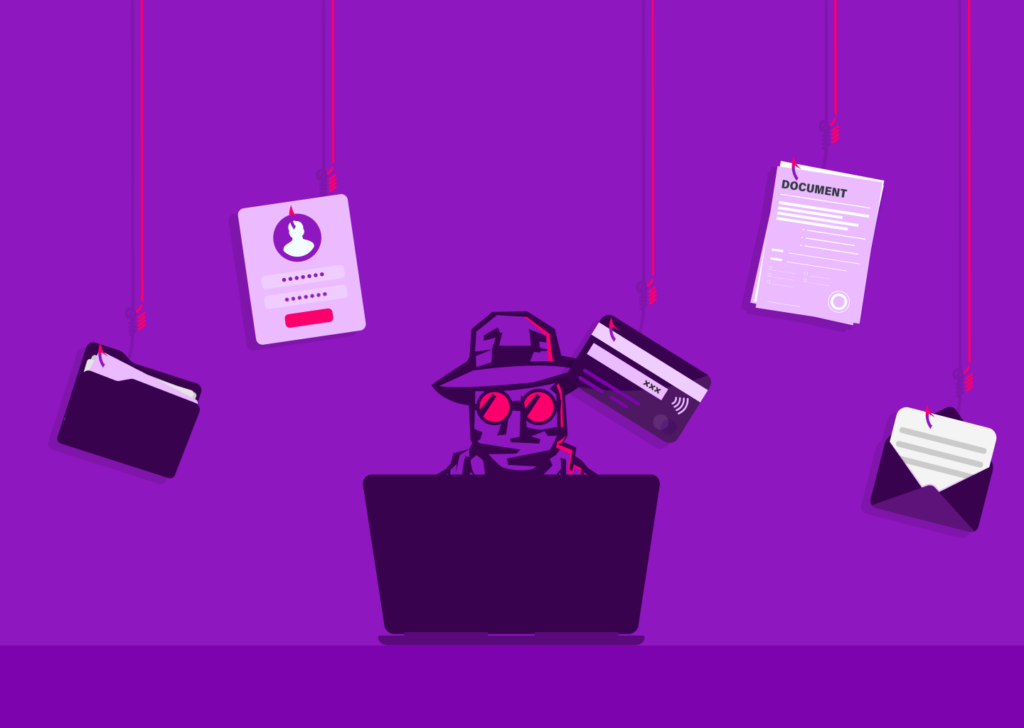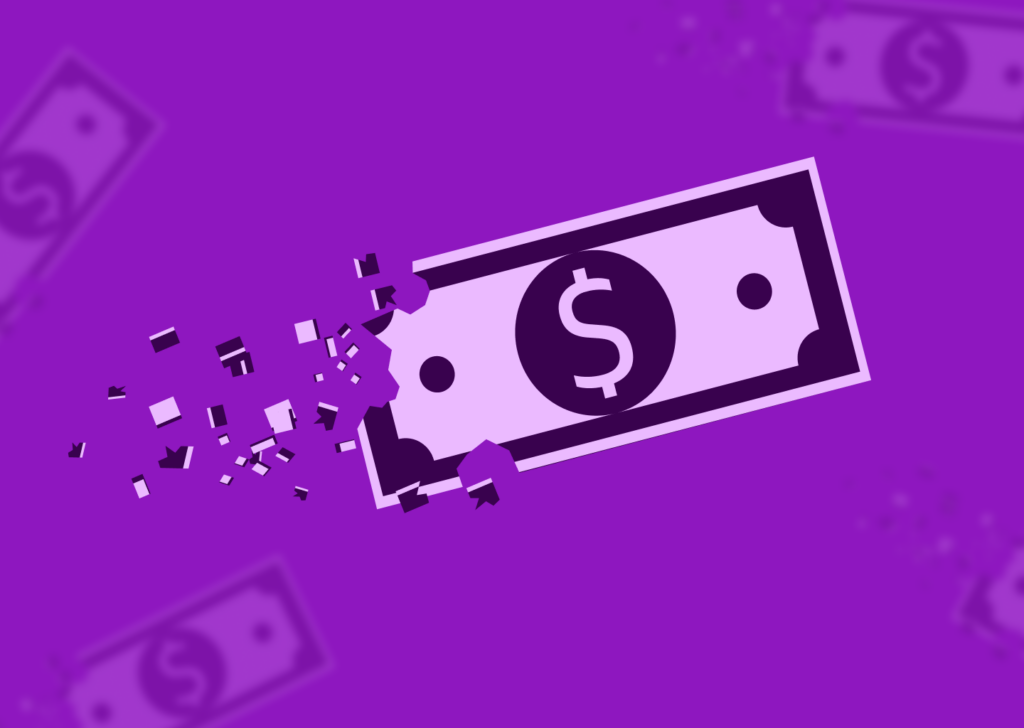The remote economy has unlocked a world of global opportunities and real-time connections. People can work from anywhere in the world. Groceries miraculously arrive at our doorstep. Any household chore can now be tasked out through your favorite app in seconds – from laundry to assembling furniture.
This movement has been called the remote economy, the gig economy, the sharing economy, and more. Whatever you call it, there is a clear movement making rapid progress in adding ease to our lives.
And because consumers are flocking to these businesses, the only way to balance that demand with the proper supply is through high-volume hiring at a very rapid pace.
Which is where our main character takes center stage.
Enter, the modern fraudster. A true opportunist. They steal identities, work in groups, and wreak havoc on companies and it’s customers. Worst of all, they operate in the shadows, nearly impossible to detect.
How the Remote Economy Opens Up New Fraud Opportunities
By its nature, the rise of the remote economy has created more opportunities for fraudulent activity and a higher potential for a deeper impact of fraud.

How is this so? Let’s look at four reasons.
- It’s easier for bad actors to find their way into your company.
- Identity is much easier to steal or conceal when you never meet someone face-to-face. People can manipulate credentials, spoof IP addresses, or even use deepfake technologies, making genuine identity verification a challenging task. Bad actors can get into your business more quickly and easily than ever before.
- Because of the higher volume of transactions, it’s easier to slip through the cracks.
- The remote economy thrives on swift transactions. Whether it’s signing up for a new platform, securing a gig, or getting paid for a completed task, everything happens at an accelerated pace. With thousands, if not millions, of these transactions occurring daily, fraudsters can prey this high transactional volume that provides enough noise and distraction to bury their illicit activities, often going unnoticed until it’s too late.
- Because of higher reliance on technology, there are more vulnerabilities to exploit.
- Certainly, technology plays a huge role in preventing fraud. But it also leaves you vulnerable. Disconnected systems that don’t pass along or search for these fraud signals create an unfair advantage for fraudsters. The patterns of bad actors are hard enough to catch. Having a disjointed tech stack can make it even more challenging.
- The rapid expansion of the remote economy has paved the way for bad actors to defraud your company from anywhere.
- In the globalized remote economy, a scam artist from one corner of the world can take over an account halfway across the globe. This not only amplifies the pool of potential targets for fraudsters but also complicates jurisdictional and legal responses. Tracking, reporting, and responding to such geographically dispersed fraudulent activities becomes a monumental challenge.
The promise of the remote economy has always been its limitless possibilities and global reach. It’s crucial for industry leaders to recognize these evolving threats and stay one step ahead.
Always remember: In the face of ever-evolving challenges, awareness is our first line of defense.
A New Type of Bad Actor
In old detective novels, the culprits were often shady characters lurking in alleys. You could spot them from a mile away. In today’s remote economy, the perpetrators are not so easy to pinpoint.
Companies have traditionally criminal record checks as their first line of defense against bad actors. While those still play a crucial role, modern fraudsters have found ways to bypass those traditional checks.
Let’s delve into the characteristics of these modern fraudsters.

Modern fraudsters don’t wait around for an accidental loophole. They’re curious, diving deep into systems, trying to understand them as well as the engineers who built them. Think of them as the ultimate beta testers. Recently, they’ve learned that old-school identity verification can be tricked by printing out a picture and taping it to a coffee mug as a solution to the static selfie verification.
They plan long-term and are well-organized. Fraudsters today are no longer content with quick hits. After finding a loophole, they’ll find any way to exploit it over and over again. They’ll take over other users’ accounts, buy identities on the dark web, or find ways to not get caught. It takes 18 months on average to catch an ongoing fraud incident.
They are masters at concealing/stealing Identities. In the modern fraudster’s toolkit, you’ll find more than just stolen credit card details. They’ve mastered the art of digital disguise, crafting personas that can pass most online checkpoints. Financial losses from Account Take Overs increased 90% from 2021 to 2022.
They are not restricted by geography or platform. In-person scams are more risky and less valuable to the modern fraudster. They sign up for multiple platforms and exploit vulnerabilities from a distance. This digital fluidity means they can target multiple markets, diversify their methods, and continuously adapt. Modern fraudsters run a 24/7 operation.
Recognizing these sophisticated actors is only the beginning.
With an understanding of their motives, methods, and movements, we can adapt and fortify our defenses. There’s hope, but we need to understand the risks they pose. As the landscape of the remote economy evolves, so too does the nature of its threats.
Let’s dive into how these modern tactics manifest into unique risks and the specific types of fraud they bring to the table.
The New Risks and New Types of Fraud
Trust & Safety teams play a pivotal role in addressing threats in growing labor marketplaces. Amy Leff, a veteran in forming such teams in various marketplaces, provides a firsthand look into the prevalent types of fraud.

1. Ban Evasion & Duplicate Accounts
This is when one person creates multiple user accounts on your platform to (a) evade a ban (i.e. platform deactivation) or (b) test and identify new fraud vectors. When you catch someone doing something bad on your platform, they often have multiple user accounts.
This scenario is all too common, illustrating a conflict of interest within platforms and highlighting the ease with which users can exploit system vulnerabilities.
2. Referral Fraud
Someone with duplicate accounts could be running a referral fraud ring. For platforms offering cash bonuses for referrals, fraudsters will find ways to access that payout.
This deceptive cycle poses both a financial and reputational risk to platforms, underscoring the need for vigilance and proactive measures.
3. Account Takeovers (ATOs)
ATOs are when bad actors gain access to an otherwise legitimate account for malicious purposes. Often, this involves social engineering. Then the bad actors redirect payments to their own bank account and take off with the money before anyone notices it’s missing!
ATO’s showcase the fraudsters’ cunning use of social engineering, emphasizing the importance of user education and secure communication practices.
4. Money Laundering & Collusion
Anywhere money changes hands online there’s opportunity for collusion. Bad actors will use stolen credit cards send money to themselves. And unfortunately, professional scammers are always looking for a new platform that hasn’t built out their fraud detection systems yet.
The sophistication of this type of fraud underscores the importance of rigorous onboarding processes and ongoing monitoring, especially for platforms where financial transactions are integral.
The varied and evolving nature of fraud in labor marketplaces necessitates a multifaceted approach to security. Adapting to new threats while maintaining user trust and platform integrity is the ongoing challenge for Trust & Safety teams.
The Unique Business Impact of Modern Fraud
Modern fraud can create deep financial wounds if left unchecked in your Trust & Safety program. And unlike traditional methods or attempts by bad actors that have glaring signs, today’s fraud can go undetected for long periods of time. Which means by the time you’ve detected it and attempted to deal with it, the financial impact is far and wide. And it’s impact on your customers could be deep, too.

And to add salt to the wound, fraudsters now operate in groups through micro-communities. If one person finds a vulnerability and can gain access to accounts or pass through your current screening process with fake or stolen identity information, the word spreads and it won’t be long until other fraudsters are walking in your front door.
Consider the ramifications of a single financial-related fraud case.
Beyond the immediate financial dent, you’ll have your hands full with chargebacks, multiple transaction fees, and potential and expensive legal issues. Because governments are rapidly legislating to protect consumers against modern fraud, legal issues often cost more and take longer to resolve.
In addition to fiscal hits, the unexpected blow is often the breach of trust with your market. In a world where trust is currency, a single misstep can lead customers to broadcast their experience to the world. A random person with a Twitter account can reach hundreds or thousands of people with a single click.
The aftermath of detecting fraud is its own expensive ordeal. You have to quickly secure stolen accounts and identities, provide financial restitution to defrauded customers, and invest in better Trust & Safety solutions to make sure this doesn’t happen again.
In essence, today’s fraud isn’t just an isolated event—it’s a full-blown business disruption.
And waiting for trouble to strike is no longer the solution. Leaders must get proactive and take the necessary steps to prevent these bad actors from even getting a foot in the door.
Fighting the New Fraud Fight
The digital age has brought about a new breed of fraud, intricate and camouflaged.
Identity, now more than ever, is paramount. Whether it’s verifying a user signing up or validating a high-value transaction, putting identity verification at the core of operations is indispensable.

Yet, despite all measures, fraud will evolve, and defenses must be proactively adaptive. Reactive measures, while necessary, won’t cut it. It’s akin to patching holes on a ship while the storm rages on. Investment in predictive systems, ones that can forecast threats based on behavioral analytics and emerging fraud patterns, is the next step.
Perhaps the most radical shift in mindset is in perceiving everyone in the organization as a custodian against fraud. You need to build your product to prevent fraud, train your sales and marketing teams to keep bad actors out, and get leadership to build a culture that protects your customers and company.
The remote economy is changing the game, opening doors to global opportunities but also new challenges. As we dive deeper into this digital age, it’s clear: we’ve got to be smart about it. Modern fraudsters are crafty, but with the right tech tools, a focus on identity, and a team that’s always on the lookout, we can keep ahead. Let’s embrace the future, but let’s also make sure we’re doing it right.
Stay savvy, stay safe.